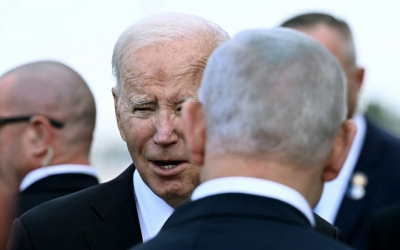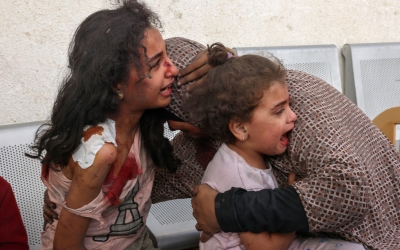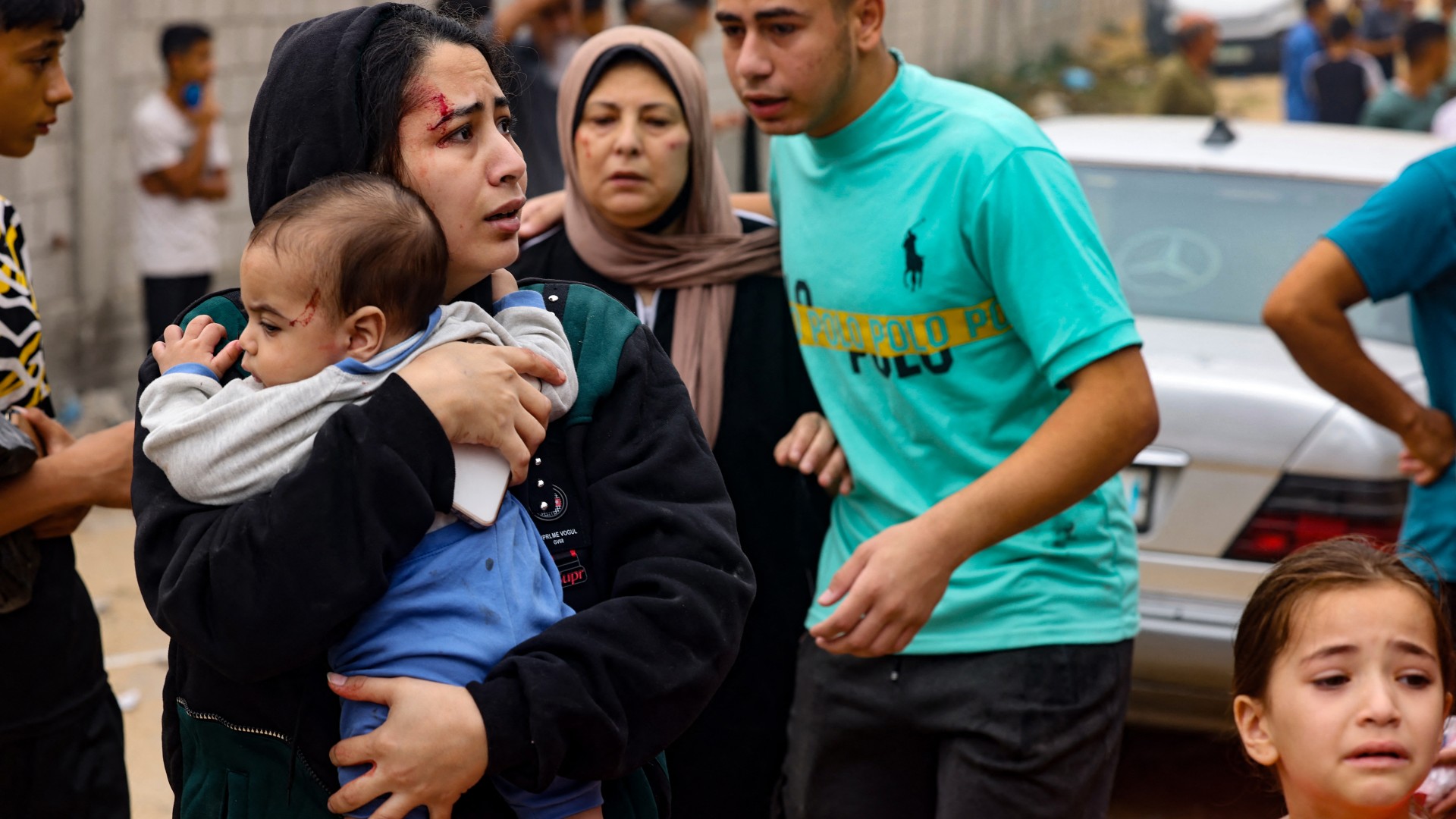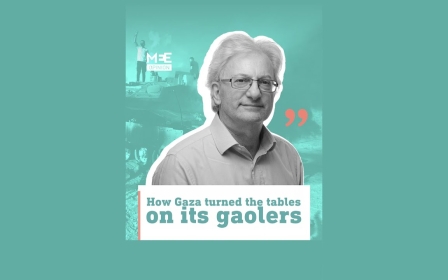Israel-Palestine war: Has Biden lost control of Netanyahu?

A year ago, three Iraqi Sunni politicians from Anbar province were in one of the Dead Sea's many luxury hotels being courted by Israeli officials.
The subject was not Palestine but Anbar, the largest and one of the most sparsely populated governorates in Iraq. The hosts reminded their Iraqi guests that their province was just under one third of the land mass of Iraq.
It had huge untapped water reserves, which only the Israelis and the Americans had the expertise to tap. It could become the food basket of the Middle East, the Israelis enthused. It had petrol and gas reserves to exploit. They could also help Anbar extract mineral reserves.
The only thing missing in Anbar was enough people to man such a renaissance.
Then the Israelis popped the question the meeting was really all about: "What if we offered you 2.3 million Palestinians?" They, too, are Sunnis, the Israeli side said: "Palestinians are hard working, they have the same culture as you, and besides having more Sunnis in Anbar could help tilt the Sunni-Shia balance in your favour".
The Iraqis offered to take the proposal back to their prime minister.
A year ago, they may have exaggerated to the Israelis their power of persuasion to the Iraqi political elite. Today, they almost certainly would wish to bury the fact they had ever entertained such a proposition.
As with much of the Arab world, Iraq has been convulsed by support for the Palestinian fighters' attack on 7 October.
In a rare show that crossed the sectarian divide, Iraqis have been taking to the streets in their hundreds of thousands. They blocked oil tankers from going into Jordan, saying they would not allow Iraqi oil to go to countries that recognise Israel.
Iraqi Prime Minister Mohammed al-Sudani called the Israeli response "brutal Zionist aggression".
Follow Middle East Eye's live coverage for the latest on the Israel-Palestine war
His normally bitterly divided predecessors, Mustafa al-Kadhimi, Haidar al-Abadi, Adil Abdul-Mahdi and Nouri al-Maliki, issued a joint statement calling the Palestinian fighters' attack "a natural response" to "Israeli provocations and violations".
The Washington Institute for Near East Policy dismissed these unprecedented displays as theatre. But they have been repeated in Amman, Cairo, Beirut - all places where demonstrations happen under licence and only if they are sanctioned.
Although the approach was futile, it did show one thing: long before the 7 October attack, Israeli officials were thinking seriously of emptying the Occupied West Bank and Gaza of Palestinians, of doing what they did in 1948 , only with double or treble the numbers.
The real battleground
Having abandoned land for peace, having tried and failed at separation as a model by putting Palestinians behind a variety of walls, roads and checkpoints, Israel's only project today is to build an apartheid state in which the Jewish citizens alone reign supreme.
Demography, however, is against it, particularly in a one-state solution that Israel is now building. However many times Israel divides and rules the Palestinians, the statistics are not in its favour.
Roughly similar numbers of Jews and Palestinians live between the Jordan River and the Mediterranean Sea. The birthrates are different and there is Ashkenazi Jewish emigration to consider. Many have dual citizenship and they are using their foreign passports right now. As time passes, Israeli Jews will be heavily outnumbered in the land they claim as their own.
The only way to avert Jewish minority rule is by forcing out more than a million Palestinians. Conversely, however unbearable life is made for them, as long as Palestinians refuse to leave their land, they are in with a chance of emerging victorious.
For each side, demography is the real battleground.
Israeli efforts to prevail in this conflict have nothing to do with a just or negotiated solution. Still less have they to do with sharing a common land. The continued insistence of US and Europe on a two-state solution that has no chance of seeing the light of day is camouflage for the real task at hand - ethnic cleansing.
An opportunity like a war that could empty Gaza of most of its population of 2.3 million Palestinians does not come along often.
Significantly, two Israeli policy papers have come to light since the pounding of Gaza began in earnest. They do not come from fringe groups of settlers, although it has to be said, settlers no longer represent the extreme of the Israeli right.
One of them, entitled "Position paper: A plan for resettlement and final rehabilitation in Egypt of the entire population of Gaza: economic aspects", was published on the website of a think tank run by Meir Ben-Shabbat, a former national security adviser who played a key role in creating the Abraham Accords with the United Arab Emirates, Morocco and Bahrain.
Post-war scenarios
Amir Weitman, the author of the paper, states: "There is currently a unique and rare opportunity to evacuate the entire Gaza Strip in coordination with the Egyptian government. An immediate, realistic and sustainable plan for the resettlement and humanitarian rehabilitation of the entire Arab population in the Gaza Strip is required which aligns well with the economic and geopolitical interests of Israel, Egypt, the USA and Saudi Arabia."
The continued insistence of US and Europe on a two-state solution that has no chance of seeing the light of day is camouflage for the real task at hand - ethnic cleansing
The other document was intended for internal use only but ended up in the hands of a movement campaigning for the resettlement of Gaza. It was leaked to the Israeli website Calcalist.
Its author, Gila Gamaliel, the intelligence minister, using the official logo of her ministry, examined three post-war scenarios for Gaza.
The one she thinks will yield strategic results is in three stages: the creation of tent cities in Sinai southwest of Gaza; the setting up of a humanitarian corridor to aid the residents, and the construction of cities in Northern Sinai.
A sterile zone several kilometres wide would be created on the Egyptian side of the border to stop the evacuees from returning. In addition to creating cities in Sinai, "Canada, Greece, Spain and Northern African countries could absorb Palestinian evacuees", Gamaliel wrote.
The settlers in the West Bank have more direct ways of making their views known to the Palestinian villagers amongst whom they have imposed their presence.
They placed leaflets on cars and left bloodied dolls at schools.
"By God, we will descend upon your heads with a great catastrophe soon. You have the last chance to escape to Jordan in an organised manner," said one leaflet circulated on Friday in the West Bank city of Salfit. "After that, we will destroy every enemy and forcefully expel you from our holy land... Load your bags immediately and leave wherever you came from. We are coming."
The intent is clear, even if the details of the plan to change the face of the Middle East, as Israeli Prime Minister Benjamin Netanyahu vowed to do in the first days after the 7 October attack, are not.
A second Nakba
Even if the war ended tomorrow at the start of the fourth week, the destruction caused by a blitzkrieg never before witnessed in the region is such that hundreds of thousands of Palestinians in Gaza would be left living in tents. An exodus could be arranged under the guise of a humanitarian relief effort.
Both Egypt and Jordan have made their opposition to a second Nakba, or Catastrophe, very plain. For each Arab neighbour that recognises Israel, a major population transfer is an existential issue.
Jordan's Foreign Minister Ayman Safadi said a second Nakba would amount to a "declaration of war".
Amman would not allow "a new catastrophe" nor would it let Israel "shift the crisis created and exacerbated by the occupation to neighbouring countries", he added.
Whether Amman has the power to do either of those things is another matter.
After talks with German Chancellor Olaf Scholz, Egyptian President Abdel Fattah el-Sisi said any move of Palestinians from Gaza to North Sinai would set a precedent that could be repeated in the West Bank to Jordan. If Israel wanted to temporarily displace the Palestinians in Gaza, they could put them in the Negev, Sisi suggested mischievously.
Since this crisis began, Sisi, a talented actor, has been playing the role of Nasser, but the trouble that his more immediate predecessor Hosni Mubarak got into domestically during the Israeli ground invasion of Gaza in 2008 must also be weighing on his mind in a re-election year.
Both Egypt and Jordan are so weak, they can only threaten Israel and the US with their own demise, although the prospect of armed groups operating out of Sinai and Jordan on Israel's southern and eastern border could, or rather should, give the Nakba planners pause for thought.
It is US's reaction to Israel's determination to change the map of Gaza and the Middle East that really matters.
Enter the US
Would US President Joe Biden let Netanyahu do this?
Sorry, that is a naive question. Biden has already lost control of Netanyahu, but the rabbit hole Israel has led America down again and again is deeper this time, rather like Hamas's tunnels.
In three short weeks, Biden has already reversed most of the US's carefully laid plans in the region.
Principally military disengagement: the US has to return the missile defence and high-altitude systems, and the aircraft carriers groups it has spent the last three years withdrawing.
It's also now in the position of threatening Iran, whose Supreme Leader Ali Khamenei had authorised direct talks with the US over an interim nuclear deal and was happy to keep that channel open.
The US has key allies in Egypt and Jordan screaming at the top of their lungs.
Above all, it has two wars running simultaneously, in Ukraine and Gaza, both without obvious exit strategies and both draining the limited production capacity of US rockets, smart bombs and artillery shells.
US stocks of artillery shells in Israel had been drained to supply Ukraine. Now they have to drain the shells meant for Ukraine to supply Israel.
The list of downsides for Biden is long and growing with each passing week. His room for manoeuvre on Israel is limited. Should he contemplate breaking step with Netanyahu, he knows the Republicans would make hay.
Israel knows that too and is waiting for former US President Donald Trump. So Biden, too, could be contemplating what the region might look like if Israel partially succeeded in emptying Gaza.
The sign of things to come
A paragraph on page 40 of a letter sent by the Office of Budget and Management on 20 October to the acting head of the House of Representatives makes interesting reading on this issue.
In it, the White House is asking Congress to fund the "potential needs of Gazans fleeing to neighboring countries", part of a $105bn request made last week that includes money for Israel and Ukraine.
The letter says the current crisis "could well result in displacement across border and higher regional humanitarian needs and funding may be used to meet evolving programming requirements outside of Gaza".
Standard contingency planning or a sign of things to come?
No Palestinian leader reading that would be confident of Biden making the right choice any more. All confidence has been lost.
Only a few weeks after a senior US official declared at a press briefing that the Middle East was quieter than it has been for decades, the US now finds it on the verge of a regional war.
Its major ally, Israel, is out of control, making no attempt to distinguish between Hamas fighters and the civilian population, between Palestinians in Gaza and the Palestinian citizens of Israel or the Palestinians in the West Bank.
Israel's collective rage over its own Sept 11 is such that it is now hitting out on all fronts simultaneously.
You might have thought that reality or sanity would step in at some point in Washington. You might have to wait a long time for that bus to arrive.
The views expressed in this article belong to the author and do not necessarily reflect the editorial policy of Middle East Eye.
This article is available in French on Middle East Eye French edition.
Middle East Eye propose une couverture et une analyse indépendantes et incomparables du Moyen-Orient, de l’Afrique du Nord et d’autres régions du monde. Pour en savoir plus sur la reprise de ce contenu et les frais qui s’appliquent, veuillez remplir ce formulaire [en anglais]. Pour en savoir plus sur MEE, cliquez ici [en anglais].








